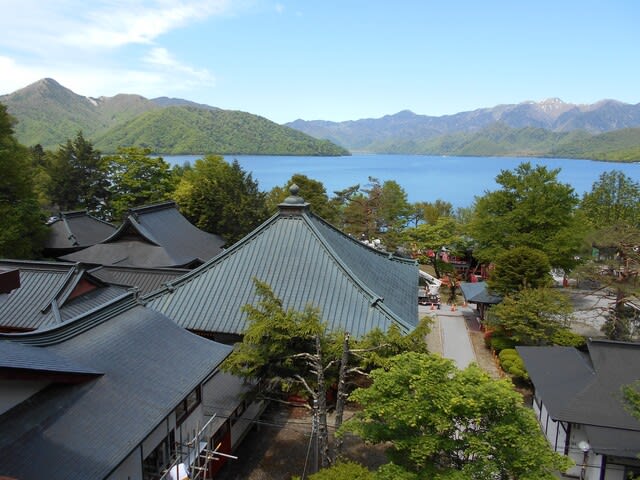In the second period, ancient studies arose as a reaction to the teaching of Neo-Confucianism. It may be said that this was the birth of humanism in Japan . Examples include Jinsai Ito *1, Ekiken Kaibara *2, and Sorai Ogyu *3, but there were also reactions from the Neo-Confucian system, such as Anzai Yamazaki *4 and Hakuseki Arai . Furthermore, the influence of humanism was not limited to Confucianism, but also led to the development of Japanese studies, such as the activities of Mabuchi Kamono *5. Furthermore, the influence of Neo-Confucianism on the masses can be seen in the emergence of Baigan Ishida *6's shingaku. As a reaction to Neo-Confucianism , there were also ideas such as Shoeki Ando 's revolutionary democracy .
*1 Jinsai Ito did not serve as a government official throughout his life, but instead lived as an ordinary Confucian. They dismissed the commentaries of Zhu Zi and others as going against the ancient meaning of Confucius Meng, and directly advocated seeking the path of saints in the original s Confucius and Mencius. He is the founder of the Kogi school.
*2 Kaibara Ekiken was a member of the Neo-Confucian school of thought, but his writings range from medicine to natural history. In his later years, he criticized Neo-Confucianism and developed a theory of rational monism in response to rational theory. This can be said to be a case in which the concept of knowledge in Neo-Confucianism was directed outward.
*3 Sorai Ogyu was the founder of the classical school of dictionary studies. He aimed to establish a new Confucian system through an accurate understanding of the Six Classics . He was the greatest thinker of the Old School, preached the separation of public and private life, and paved the way for economics.
*4 Anzai Yamazaki created Suika Shinto, which was a combination of Yoshida Shinto and Neo-Confucianism.
*5 Hakuseki Arai was a Neo-Confucian scholar, but this is a case where the concept of knowledge in Neo-Confucianism turned to historical research. His book, Western Journal, was the beginning of the rise of Western studies.
*6 Mabuchi Kamono tried to revive the ancient path through research on the Manyoshu. He laid the foundation for Japanese studies.
*7 Baigan Ishida adopted Shinto, Buddhism, and RoushiSoushi based on Neo-Confucianism, and advocated the establishment of commercial morality, preaching that merchants were no inferior to samurai in fulfilling their social duties.
*8 Shoeki Ando (physician) came from an upper-class peasant family, but he was a revolutionary thinker who completely rejected class-based society and Confucian-Buddhist ideology and advocated an ideal society in which all people worked and lived on their own.
The third period saw the development of classicism, scientific thought, the separation of public and private life, and the development of economics that had occurred in the second period. However, classicism in Confucianism became less common , and Kokugaku reached its maturity under Norinaga Motoori *1. Regarding scientific thought, Baien Miura *2 and the appearance of many Dutch scholars are also a feature of the third period, including Genpaku Sugita *3, Gennai Hiraga *4, Ryotaku Maeno *5 and Kokan Shiba *6. During this period, Dutch studies were in their infancy and began to spread as an academic discipline.*6 This period also saw the development of economics due to the influence of Sorai Ogyu 's separation of public and private life . Shundai Dazai *7, Seiryo Kaiho *8, and Toshiaki Honda *9 are some examples. Comparative cultural anthropological thinkers with a sharp critical spirit included Chuki Tominaga *10 and Banto Yamagata *11.
*1 Norinaga Motoori investigated the true meaning of Japanese classics using linguistic and philological methods, harshly criticized the worldview of Confucianism and Buddhism, and affirmed humanity by emphasizing the compassion of things. Although it reflected a new civic consciousness, its idea of the divine kingdom and the idea of reverence for the king would be inherited by Restored Shintoism.
*2 In addition to Confucianism,Baien Miura studied astronomy and Western studies, and advocated the study of reason as a kind of natural philosophy, and anti-viewing unity. It was a pioneering methodological awareness of empirical science.
*3 Genpaku Sugita was a medical scientist and Dutch scholar who translated Kaitai Shinsho and laid the foundations of Dutch studies.
*4 Gennai Hiraga was an inventor, naturalist, playwright, and joruri writer. Despite his versatility, he was not accepted by the world.
*5 Ryotaku Maeno was a medical scientist and Dutch scholar who was at the center of the KaitaiShinsho translation business.
*6 Kokan Shiba was a Western-style painter and a Dutch scholar.
*7 Shundai Dazai inherited the secular aspect of Sorai Ogyu .
*8 Seiryo Kaiho was a scholar on China and economic thinker. He looked at samurai's human relationships in terms of economic relationships.
*9 Toshiaki Honda learned geography with Dutch books. He preached the necessity of trade and the importance of commerce.
*10 Chuki Nakamoto was familiar with the scriptures of Shinto,Confucianism and Buddhism, and criticized the deterioration of religion and ethics. Known as a comparative cultural anthropological thinker.
*11 Banto Yamagata was successful as a merchant. He was a relentless critic of Buddhist beliefs and Shinto mythology.
All rights reserved to M Ariake































